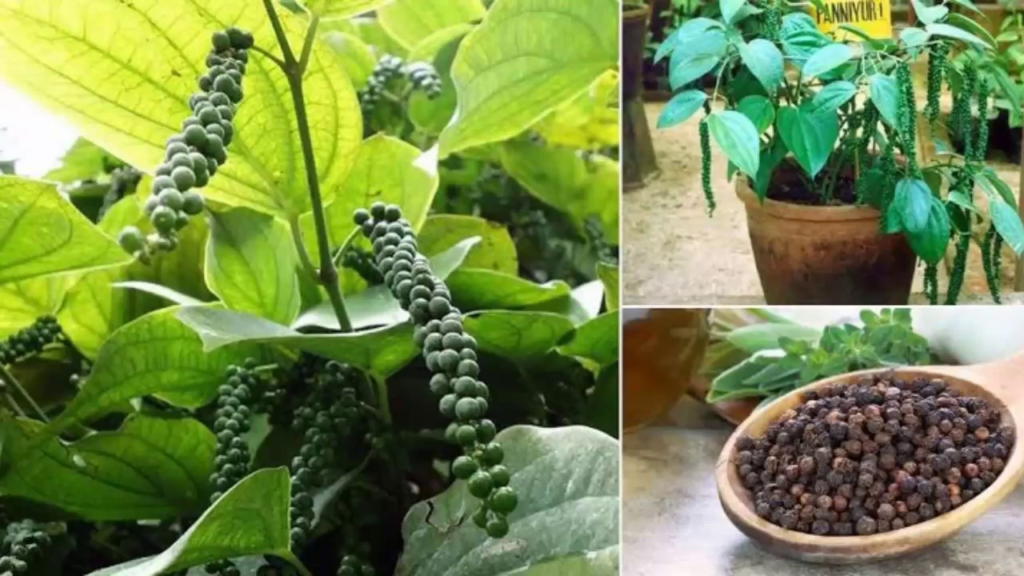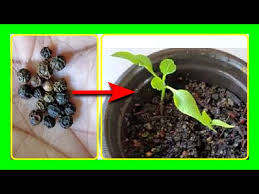Growing black pepper (Piper nigrum) at home can be a fulfilling experience, adding a unique touch to your gardening endeavors. While this spice is predominantly grown in tropical climates, you can successfully cultivate it at home with the right care and conditions. Here’s an in-depth guide to help you grow black pepper from seeds at home.
Ideal Growing Conditions
1. Climate:
Black pepper thrives in warm, humid tropical environments. While it prefers temperatures between 75°F and 95°F (24°C to 35°C), it can adapt to cooler climates with extra care.
2. Sunlight:
Provide 6 hours of indirect sunlight daily. In colder climates or indoor setups, place the plant near a window for consistent light.
3. Soil:
Well-draining soil with a pH between 6.2 and 7.0 is essential. A mix of humus-rich, medium-clay soil retains moisture while preventing waterlogging. Test and adjust the pH with lime or sulfur if needed.
Watering and Humidity
1. Watering:
Keep the soil moist but not waterlogged by watering 2–3 times weekly or whenever the topsoil feels dry. Overwatering can lead to root rot.
2. Humidity:
High humidity is crucial for healthy growth. Regularly mist the plant with soft water and place a water-filled saucer beneath the pot to boost ambient humidity.
Soil Preparation and Fertilization
1. Enrich the Soil:
Incorporate well-aged manure or compost into the soil for nutrients. A bi-weekly liquid fertilizer application and occasional Epsom salt feed can promote vigorous growth.
2. Mulching:
Apply organic mulch, such as leaves or straw, around the base of the plant twice a year. Mulching helps retain moisture, regulate soil temperature, and suppress weeds.
Planting Black Pepper
1. Seed Preparation:
Soak black pepper seeds overnight in lukewarm water to soften the seed coat and promote germination.
2. Sowing:
Plant seeds in a pot with nutrient-rich potting mix and compost, burying them ¼ to ½ inch deep. Maintain spacing of about 3 inches between seeds.
3. Germination:
Keep the soil warm and moist. Germination takes 30–40 days. Protect seedlings with overhead shade until they reach 5–6 inches in height, after which they can be transplanted outdoors.
4. Propagation from Cuttings:
For faster results, propagate from runner shoot cuttings in late winter or early spring. Plant 2–3-node cuttings in well-draining soil, keeping it consistently moist.

Care and Maintenance
1. Patience:
Black pepper plants take time to mature, often requiring 3–5 years before they produce peppercorns.
2. Pests and Diseases:
Monitor for common issues like aphids, spider mites, and root rot. Use organic pest control methods such as neem oil or insecticidal soap.
3. Support Structures:
As a climbing vine, black pepper needs support. Install trellises or poles to manage growth effectively.
Harvesting and Storage
1. Harvesting:
After 2–5 years, the fruits will ripen to a light red color. Harvest them and dry them in direct sunlight until they shrink and turn black.
2. Storage:
Store dried peppercorns in airtight containers in a cool, dry place for up to 4 years. Freshly ground pepper should be stored in resealable bags.
Additional Tips
- Location: Choose a spot with optimal sunlight and humidity for outdoor planting or indoor positioning.
- Regular Monitoring: Check frequently for signs of stress, pests, or diseases. Promptly address any issues to maintain plant health.
Growing black pepper at home is a labor of love that rewards you with fresh, aromatic spice for your kitchen. By following these detailed guidelines and maintaining a balance of sunlight, water, and soil care, you can enjoy the satisfaction of cultivating this valuable plant right at home.
